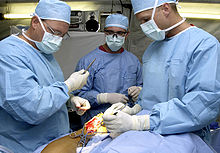NYC Medical Malpractice Lawyer Jeff Bloom is helping his client in her legal fight to get Lavern’s Law passed
 Our partner, New York Medical Malpractice Attorney Jeff Bloom is helping our client Elissa McMahon in her crusade to get Lavern’s law passed (see previous post). After she discovered that doctors in a New York hospital failed to diagnose cancer, Elissa McMahon was unable to bring a lawsuit because the statute of limitations had passed. In New York the statute of limitations for victims of medical malpractice starts at the time of the occurrence of the medical error. Lavern’s Law is a proposal to have the statute of limitations start at the time of the discovery of the error. This law would allow patients like our client, Elissa McMahon, to bring a lawsuit against the hospital which failed to diagnose her cancer. Most States in the US have similar laws. New York State is one of only six States to start the statute of limitations at the time of the occurrence of the error. Talking about Elissa McMahon’s case, Jeffrey Bloom told the NY Daily News “How could she possibly not have a right to bring a lawsuit when the statute of limitations ran (out) before she even knew she was sick?”
Our partner, New York Medical Malpractice Attorney Jeff Bloom is helping our client Elissa McMahon in her crusade to get Lavern’s law passed (see previous post). After she discovered that doctors in a New York hospital failed to diagnose cancer, Elissa McMahon was unable to bring a lawsuit because the statute of limitations had passed. In New York the statute of limitations for victims of medical malpractice starts at the time of the occurrence of the medical error. Lavern’s Law is a proposal to have the statute of limitations start at the time of the discovery of the error. This law would allow patients like our client, Elissa McMahon, to bring a lawsuit against the hospital which failed to diagnose her cancer. Most States in the US have similar laws. New York State is one of only six States to start the statute of limitations at the time of the occurrence of the error. Talking about Elissa McMahon’s case, Jeffrey Bloom told the NY Daily News “How could she possibly not have a right to bring a lawsuit when the statute of limitations ran (out) before she even knew she was sick?”
In 2012 Elissa McMahon went to Lenox Hill Hospital in New York City for a fibroid removal. At the time of the surgery, pathology slides from Lenox Hill Hospital clearly indicated that the patient had cancer but doctors failed to diagnose it. Two years later she went to a doctor after suffering from severe back pain. She was diagnosed with stage 4 cancer. 6 months later she consulted with our firm and discovered that the statute of limitations had passed and that she was unable to sue. Our partner Jeffrey Bloom is now helping Elissa McMahon in her battle to change the law and get justice. If the law goes through in the next session Elissa McMahon, a 46 year old single mother of a teenage son, will be able to bring a lawsuit. If it doesn’t pass this session she will have to wait until next year. She has stage 4 metastatic cancer and told the News “Even if my son can’t benefit from this, there are other people in similar situations.”
Below is a video of Elissa McMahon in which she discusses her tragic situation with Jeffrey Bloom. Jeff traveled to Albany in support of Elissa and others in her situation to push for the passage of Lavern’s Law. It is a travesty that the Republican’s in the legislature have been blocking this law.
 New York Personal Injury Attorneys Blog
New York Personal Injury Attorneys Blog








